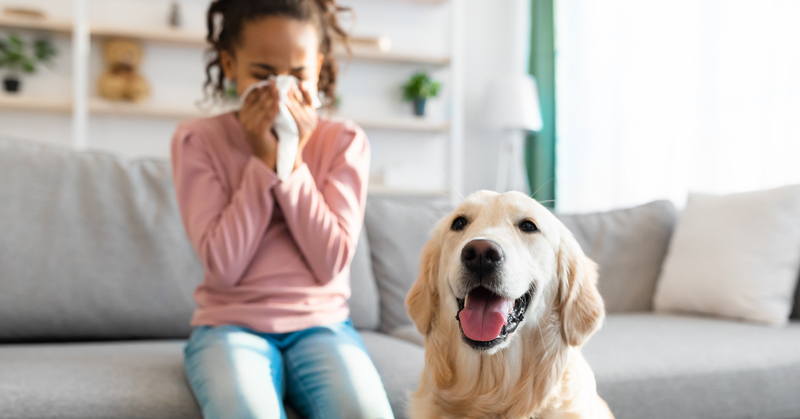
Keep allergy triggers out of your house by following these simple tips.
Sniffling and sneezing at this time of year? If so, you’re certainly not alone. Spring allergies, also called hay fever, affect more than one-quarter of adults and nearly one-fifth of children in the U.S., according to the Centers for Disease Control and Prevention (CDC). That’s a lot of seasonal misery.
While you may have read up on ways to prevent allergies when you’re outdoors, surrounded by all the budding flowers, trees and grasses, it’s also helpful to know what you can do inside your own home to make you more comfortable. After all, many allergens live in your home and can keep you feeling lousy even after you’ve come indoors.
Allergy-proofing your home will not only help reduce the number of seasonal allergens that cause symptoms to flare, but these tips will also help you rid your home of other common allergy triggers, such as dust, mites, mold and dander.
Here are 7 tips to allergy-proof your home:
- Take your shoes off. When you come inside, leave your shoes at the door. This stops you from tracking pollen and other allergens throughout your home.
- Change your clothes. Pollen tends to stick to clothes. Then if you sit on couches, chairs or the bed, you can transfer these allergens to objects in your home. If you’re especially sensitive, change clothes once you get home and keep the clothes you wore in a closed bag or hamper until you wash them. Showering also removes allergens trapped in your hair.
- Keep pets from being carriers. Aside from dander and fur that may make trigger some people’s allergies, pets can bring in plenty of pollen and other allergens from outside. Get in the habit of bathing pets or at least brushing their fur to remove as many allergens as possible. Wash their bedding often, which may house the allergens they bring indoors.
- Keep windows closed. This may seem like a no-brainer but if temperatures are comfortable, it can be very tempting to open the windows and let in fresh air. If you do open windows, do so towards the end of the day, when there is usually less pollen in the air.
- Vacuum regularly. This will not only remove pollen that has found its way inside, but it can pick up dust, dander, pet hair and other allergens. In addition to floors, vacuum fabrics that may trap allergens, such as curtains, pillows and couch cushions. Splurge for a vacuum with a HEPA filter, which is better at trapping very small particles so they don’t recirculate in the air.
- Wash bed linens weekly. This gets rid of any pollen, dust, dander, skin particles and other allergens that may get trapped in your bedding. If your allergies are particularly bothersome, or you can’t wash your hair before bed after being outside, change your pillowcases more often.
- Dust smartly. Use a damp cloth when dusting to trap particles instead of just moving them around. Start at high surfaces and work your way down.
Copyright 2024 © Baldwin Publishing, Inc. Health eCooks® is a registered trademark of Baldwin Publishing, Inc. Cook eKitchen™ is a designated trademark of Baldwin Publishing, Inc. Any duplication or distribution of the information contained herein without the express approval of Baldwin Publishing, Inc. is strictly prohibited.
Date Last Reviewed: January 18, 2024
Editorial Review: Andrea Cohen, Editorial Director, Baldwin Publishing, Inc. Contact Editor
Medical Review: Perry Pitkow, MD
Learn more about Baldwin Publishing Inc. editorial policy, privacy policy, ADA compliance and sponsorship policy.
No information provided by Baldwin Publishing, Inc. in any article is a substitute for medical advice or treatment for any medical condition. Baldwin Publishing, Inc. strongly suggests that you use this information in consultation with your doctor or other health professional. Use or viewing of any Baldwin Publishing, Inc. article signifies your understanding and agreement to the disclaimer and acceptance of these terms of use.